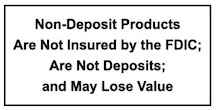IRA Information
What Is an IRA
An individual retirement account (IRA) is a long-term savings account that individuals with earned income can use to save for the future while enjoying certain tax advantages. The IRA is designed primarily for self-employed people who do not have access to workplace retirement accounts such as the 401(k), which is available only through employers.
- Individual retirement accounts (IRAs) are retirement savings accounts with tax advantages.
- Types of IRAs include traditional IRAs, Roth IRAs
- Offered vis Nest Egg (look under Wealth Management-Simplified Employee Pension (SEP) IRAs, and Savings Incentive Match Plan for Employees (SIMPLE) IRAs).
- Money held in an IRA usually can’t be withdrawn before age 59½ without incurring a hefty tax penalty of 10% of the amount withdrawn.
- There are annual income limitations that apply to deducting contributions to traditional IRAs and contributing to Roth IRAs.
| Name of Selection | Type of Account | Interest Earning | Annual Percentage Yield | Minimum Balance to earn APY/open |
|---|---|---|---|---|
| Regular Savings | Traditional and Roth | .05 | .05 | $0/$50.00 |
| 18 Month | Traditional and Roth | 2.75 | 2.79 | $500.00/$500.00 |
| 24 Month | Traditional and Roth | 2.95 | 2.98 | $500.00/$500.00 |
| 30 Month | Traditional and Roth | 2.25 | 2.27 | $500.00/$500.00 |
| 36 Month | Traditional and Roth | .55 | .55 | $500.00/$500.00 |
| DISCLOSURE | At our discretion, KeySavings Bank may change interest rates on all interest earnings accounts. Fees may reduce the earnings on all interest earning accounts. Additional deposits will not extend maturity date. | A penalty may be imposed for early withdrawal from term accounts. | Maximum additions to existing IRA Certificates with a term > 18 months are limited to year-end contributions, $25.00 minimum deposit. | Larger deposit amounts (Rollovers and Transfers) may be allowed only to the 18 month IRA Certificate. |
Anyone with earned income can open and contribute to an IRA, including those who have a 401(k) account through an employer. The only limitation is on the total that you can contribute to your retirement accounts in a single year.
Individual taxpayers can establish traditional and Roth IRAs. An IRA must be opened with an institution that has received Internal Revenue Service (IRS) approval to offer these accounts. Choices include banks, brokerage companies, federally insured credit unions, and savings and loan associations.
Because IRAs are meant for retirement savings, there is usually an early withdrawal penalty of 10% if you take money out before age 59½. However, there are some notable exceptions—withdrawals for educational expenses and first-time home purchases, among others.
If your IRA is a traditional account rather than a Roth account, you will also owe income tax on an early withdrawal. A Roth account is funded with post-tax money, so no further taxes are due when the money is withdrawn.
What Are the Different Types of IRAs and Their Rules
The following is a breakdown of the various types of IRAs and the rules regarding each one.
Traditional IRA
In most cases, contributions to traditional IRAs are tax deductible. So, if you put $4,000 into an IRA, your taxable income for the year decreases by that amount.
Your money grows tax-deferred in a traditional IRA. When you withdraw the money after retiring, it is taxed at your ordinary income tax rate for that year.
Contribution Limits for 2023
For 2023, the maximum annual individual contribution is $6,500. The catch-up contribution continues to be $1,000 for those 50 and over.
If you don’t have a retirement plan at work, your traditional IRA contributions are fully deductible. But if you (or your spouse, if you are married) have a retirement plan at work, such as a 401 k or 403b, your modified adjusted gross income (MAGI) determines whether, and how much of, your traditional IRA contributions can be deducted.
If You Have a Retirement Plan at Work
For 2023, if you are single or file as head of household and have a retirement plan at work, your traditional IRA contributions are fully deductible if your MAGI is below $73,000.
If you are married and filing jointly, for 2023, your traditional IRA contributions are fully deductible if your MAGI is below $116,000. From there, the deductibility of your contributions starts to phase out as your MAGI increases.
For 2023, the income range that phases out the deductibility of traditional IRA contributions for married couples $116,000 to $136,000.
For single taxpayers or heads of households, the phase out range for 2023 is $73,000 to $83,000.
If You Don’t Have a Plan at Work but Your Spouse Does
If you contribute to an IRA and aren’t covered by a workplace plan but are married to someone who is, the income phase-out range in 2023 is $218,000 to $228,000.
Roth IRA
Roth IRA contributions are not tax deductible in the year in which you make them. But the distributions are tax-free. That means you contribute to a Roth IRA using after-tax dollars and pay no taxes even on your investment gains.
Also, Roth IRAs do not have required minimum distributions (RMDs). If you don’t need the money, you don’t have to take it out of your account. You can contribute to a Roth IRA as long as you have eligible earned income, no matter how old you are.
Roth IRA contribution limits for the 2023 tax year are the same as they are for traditional IRAs. However, there is a catch: There are income limitations on contributions to a Roth IRA.
The phase-out range for single filers is $138,000 to $153,000 for 2023. For married couples filing joint taxes, the phase-out range is $218,000 to $228,000 in 2023.
Required minimum distributions (RMDs) are withdrawals that owners of traditional IRA and 401(k) accounts must take every year after they reach a certain age. The age has been revised upwards a couple of times. As of Jan. 1, 2023, an account holder must begin taking money out in the year he or she turns age 73.
The amount a person must withdraw is based on the account size and the person’s life expectancy, so the IRS has a worksheet to calculate the amount. Failure to take the minimum triggers a severe tax penalty. In 2023, that penalty is 25% of the balance of the account. That’s half the previous penalty but still expensive enough to keep us on our toes.
The Bottom Line
IRAs are retirement savings accounts that offer tax advantages. They work a bit like a 401(k), but they don’t require an employer to sponsor them. There are several types of IRAs: traditional IRAs and Roth IRAs, (offered via Nest Egg-SEP IRAs, and SIMPLE IRAs). There are annual income limitations on deducting contributions to traditional IRAs and contributing to Roth IRAs, so there is a limit on how much tax you can avoid by investing in an IRA.
IRAs are meant to be long-term retirement savings accounts. If you take money out early, you defeat that purpose by diminishing your retirement assets. That’s why money held in an IRA usually can’t be withdrawn before age 59½ without incurring a hefty tax penalty of 10% of the amount withdrawn (in addition to normal taxes owed).
One of our Personal Bankers can assist you in setting up an IRA-call soon.





